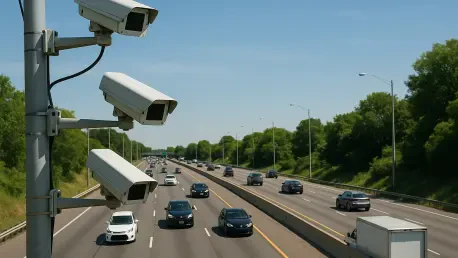Amid rising concerns over road safety, AI-powered traffic cameras have emerged as a promising solution anticipated to redefine urban driving dynamics. By providing a sophisticated approach to monitoring and enforcing traffic regulations, these smart cameras aim to significantly reduce road fatalities and enhance overall traffic safety. An illuminating study published in Management Science has demonstrated the effectiveness of AI-enabled cameras, revealing their potential not only in capturing traffic violations but also in improving driving behavior on a broader scale. Conducted by an international team from the London School of Economics, Sun Yat-sen University, and the University of Wisconsin–Madison, the study utilized data from a major metropolitan city in China to predict the substantial impact of widespread AI camera deployment. Researchers estimated that comprehensive adoption could avert approximately 1,190 accidents, prevent 496 injuries or fatalities, and save nearly $1 million in property losses each year. This revelation underscores the transformative potential of AI in addressing persistent issues of road safety, offering a future where smarter technology could be pivotal in safeguarding lives.
The Impact of AI on Traffic Safety
Beyond simple documentation of traffic violations, AI cameras introduce sophisticated capabilities that enhance safety on multiple fronts. The widespread adoption of AI technology is largely credited with its ability to detect a broader array of unsafe driving behaviors that previously might have gone unnoticed. Unlike traditional traffic cameras, these are equipped with machine learning algorithms capable of recognizing various risky actions, including aggressive driving, distracted driving, and even violations that might not ordinarily catch the human eye. This level of detection enables a more nuanced understanding of driving habits, encouraging drivers to adopt safer practices. By recording video in real time, AI cameras contribute invaluable evidence that aids in post-accident investigations, making it easier for authorities to determine causes and implement preventative measures for future occurrences. Thus, the integration of AI into traffic enforcement presents a more comprehensive approach to reducing accidents and enhancing safety on a systemic level.
Real-time data collection and analysis afforded by AI cameras play a pivotal role in advancing traffic safety initiatives. The capability to instantly detect and respond to violations also acts as a powerful deterrent, prompting drivers to exercise more caution even outside monitored zones. Behavioral change is induced not only by fear of penalties but through the ingrained habit of safer driving, as motorists become more conscious of their behavior while navigating city streets. Unlike older technological iterations that might have simply moved problems to less monitored areas, AI cameras catalyze a culture of responsible driving across the board. This systematic improvement could redefine traditional paradigms of traffic management, promising to minimize accident rates significantly. As data continues to refine AI’s efficiency, the benefits radiate beyond immediate safety, potentially leading to broader societal advantages like decreased congestion and improved urban living conditions.
Implications for Policymakers and Urban Planning
The insights presented by the study are particularly valuable for policymakers, transportation agencies, and urban planners eager to address soaring traffic fatality rates through informed strategies. Deployment of AI-enabled cameras must be approached thoughtfully to ensure maximum efficacy while minimizing potential pitfalls. As the technology gains traction, cities planning to integrate AI into existing infrastructure should focus on training personnel for optimal operation and data interpretation. Education programs aimed at informing the public of AI’s role in traffic safety are also essential to fostering acceptance and compliance.
Urban planners must also consider the broader ramifications of AI camera systems within public spaces. Beyond immediate safety benefits, the technology can offer extensive data that can inform infrastructure design, real-time traffic flow optimization, and predictive maintenance of roadways. Such information could significantly enhance the efficiency of urban environments, leading to smarter, more responsive cities. While AI traffic cameras have proved their potential, developing a supportive legal and regulatory framework will ensure ethical data usage respects individual privacy while facilitating the anticipated safety improvements.
Future Perspectives and Road Ahead
As concerns over road safety grow, AI-driven traffic cameras offer a promising solution that could alter urban driving. These advanced cameras provide a nuanced system for supervising and enforcing traffic laws, with the goal of reducing road fatalities and boosting traffic safety overall. A study in Management Science highlighted the power of these smart cameras, showing their ability not only to capture violations but also to enhance drivers’ behavior. Conducted by researchers from the London School of Economics, Sun Yat-sen University, and the University of Wisconsin–Madison, the study used data from a large city in China to forecast the impact of deploying AI cameras widely. It predicted that such deployment could prevent around 1,190 accidents, save 496 lives or avert injuries, and reduce property losses by nearly $1 million annually. This finding emphasizes AI’s transformative promise in tackling ongoing road safety issues, suggesting a future where intelligent technology plays a crucial role in prioritizing life preservation.









